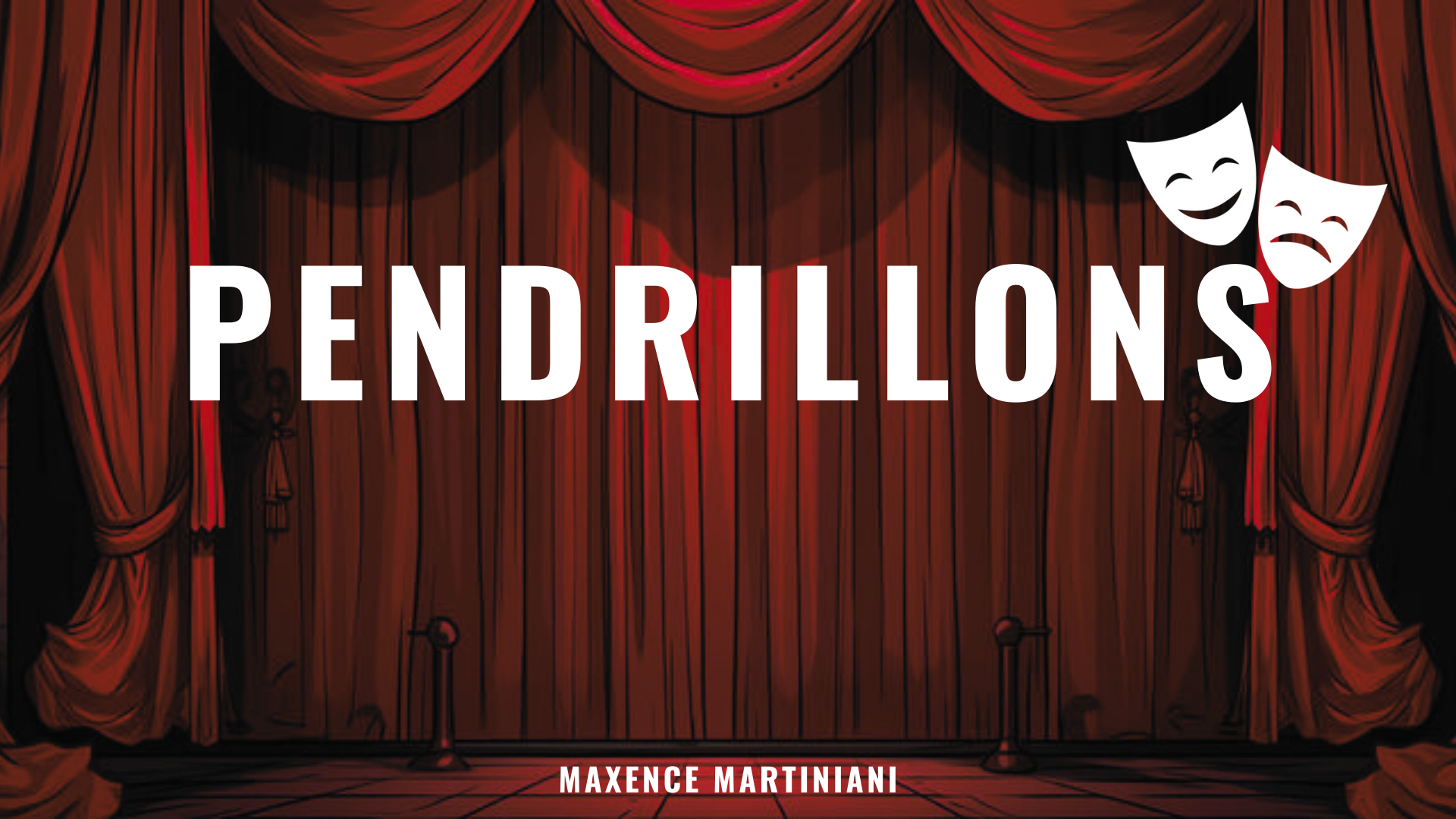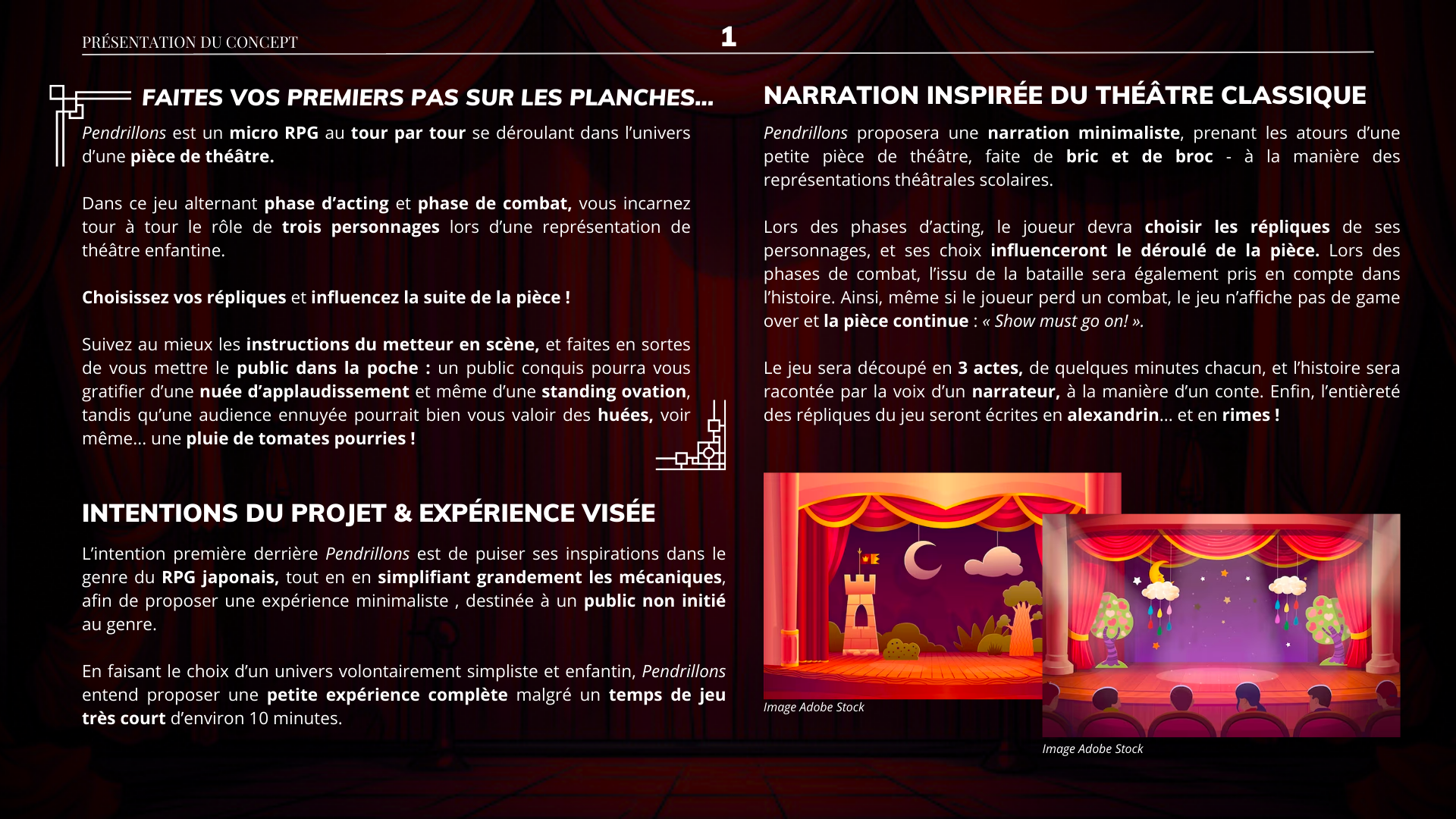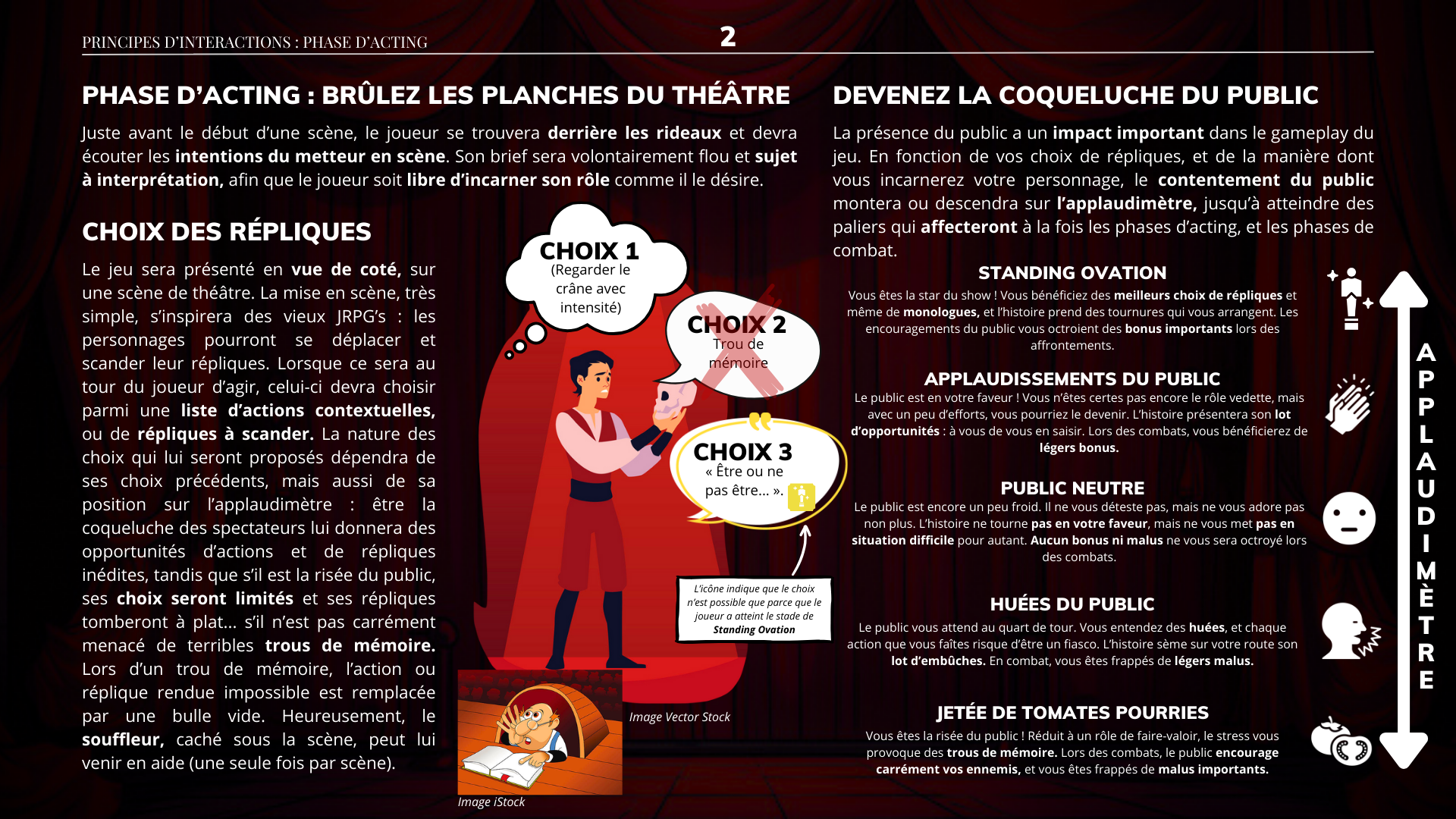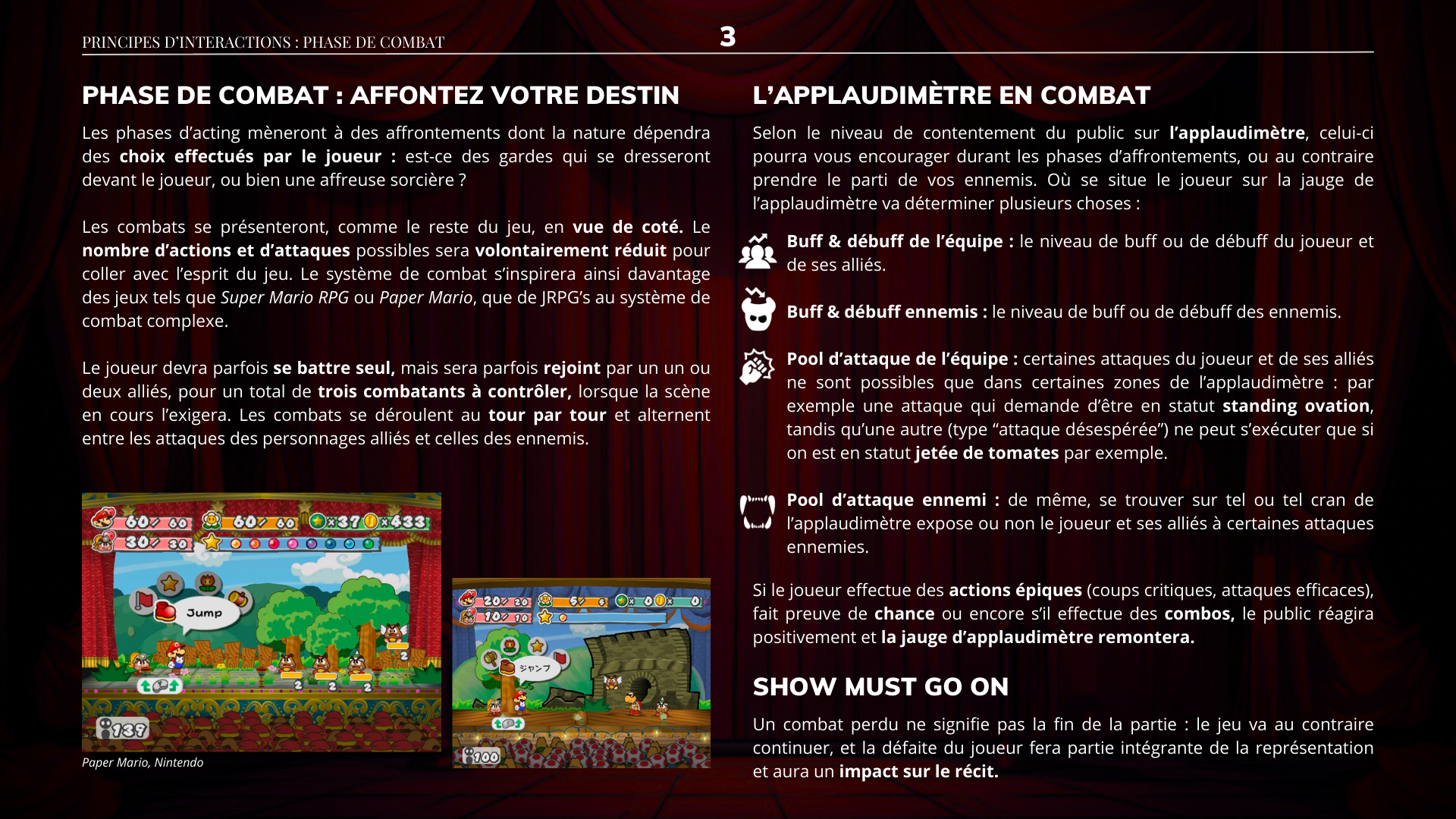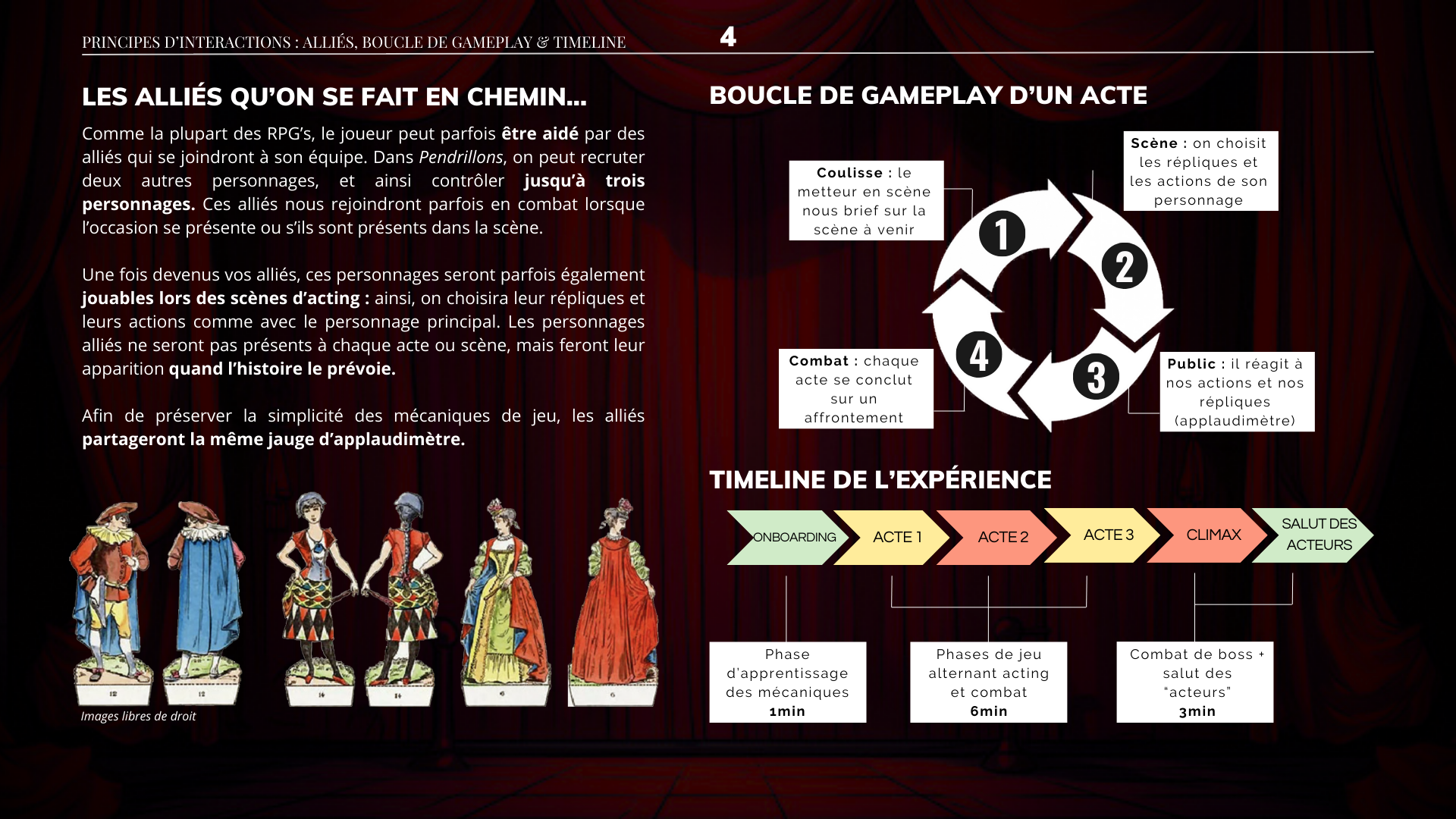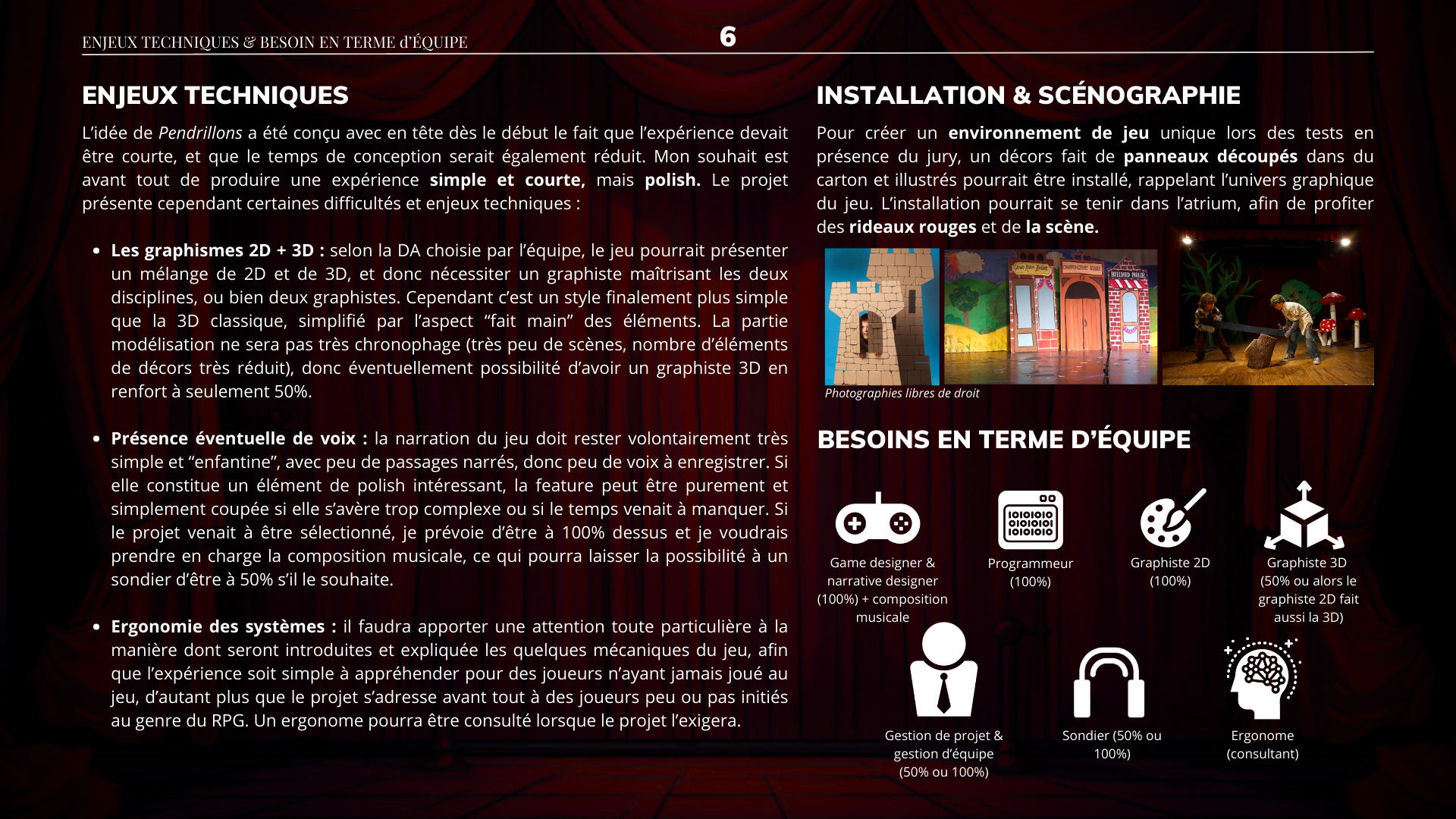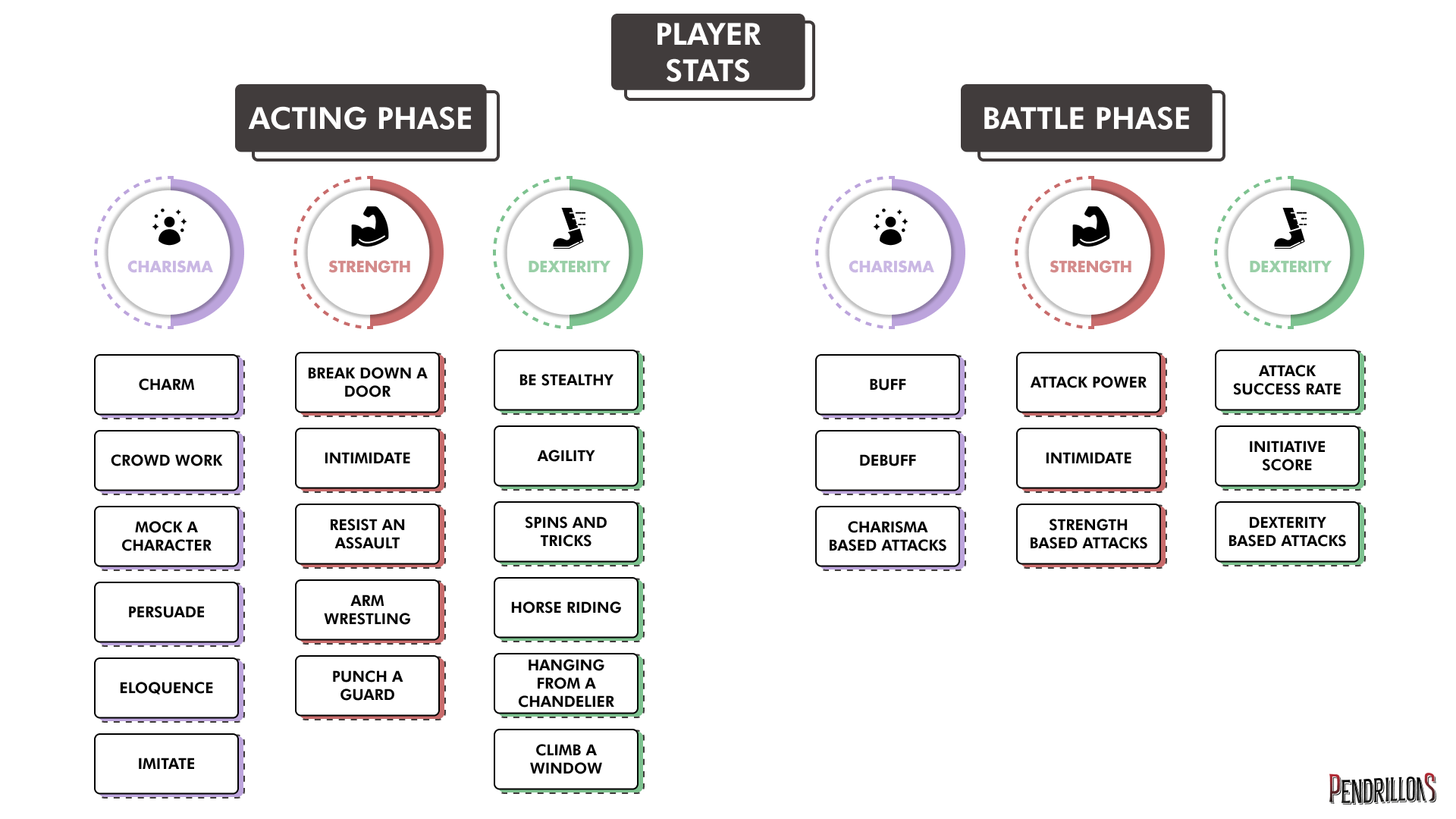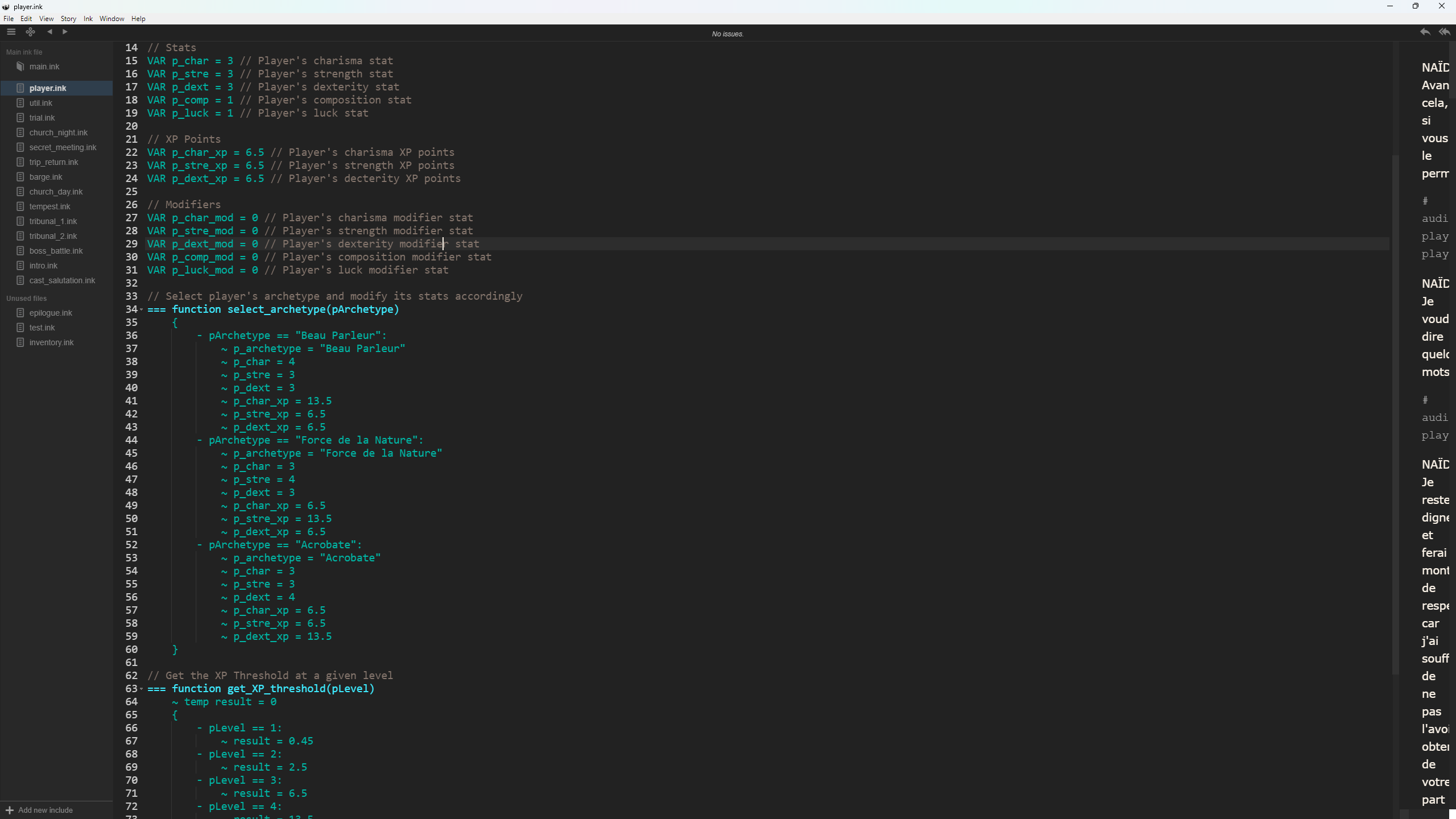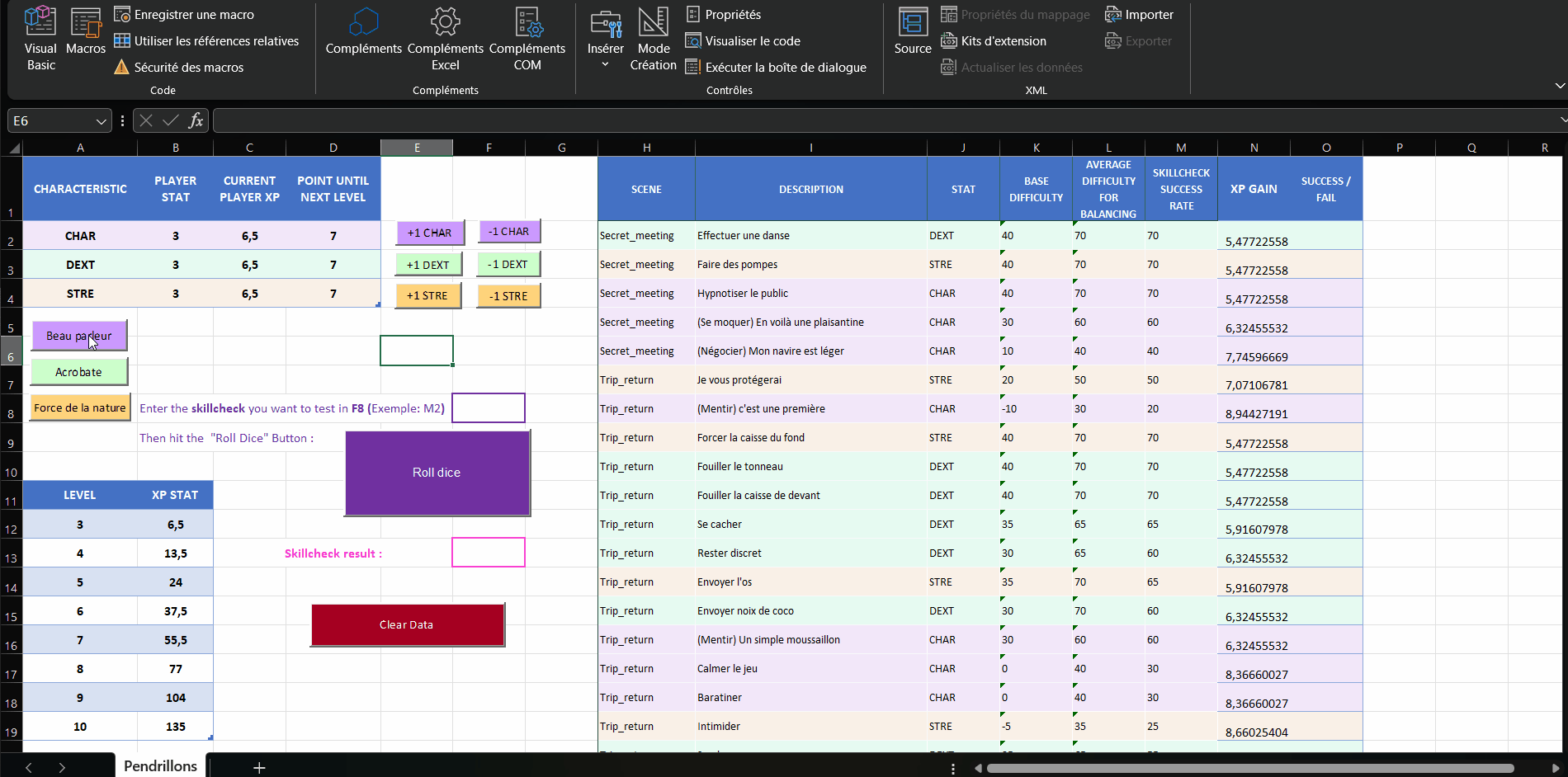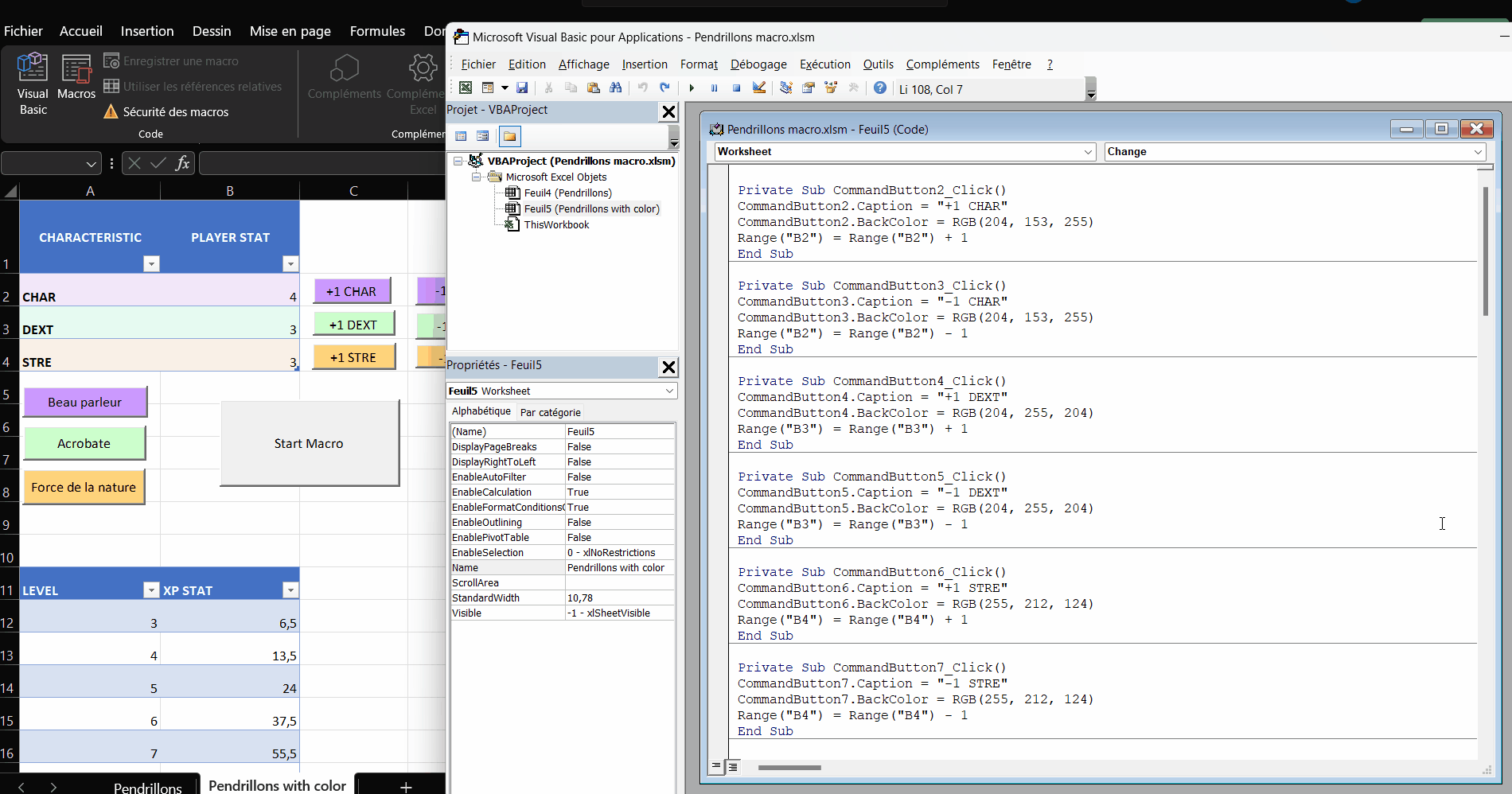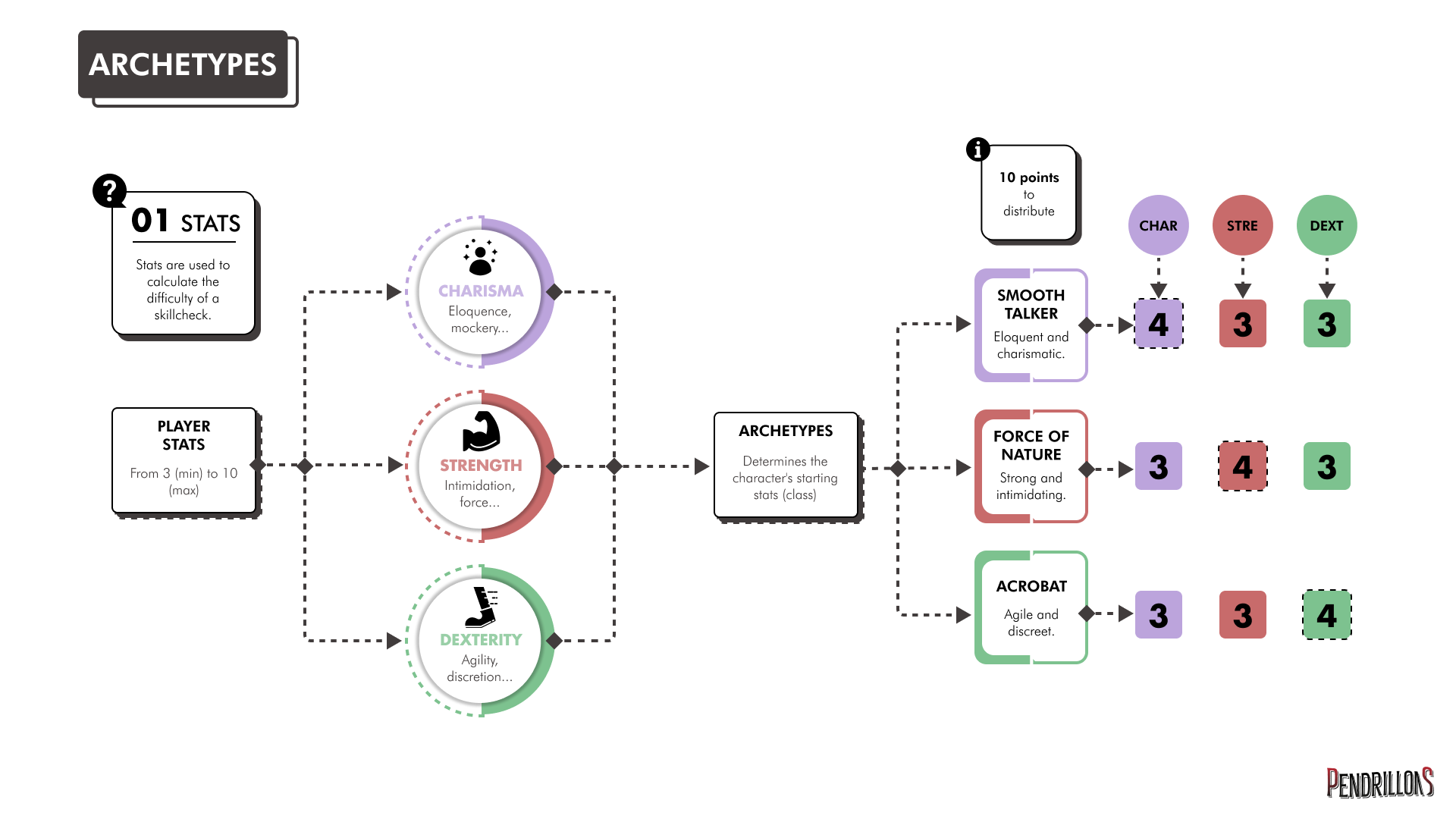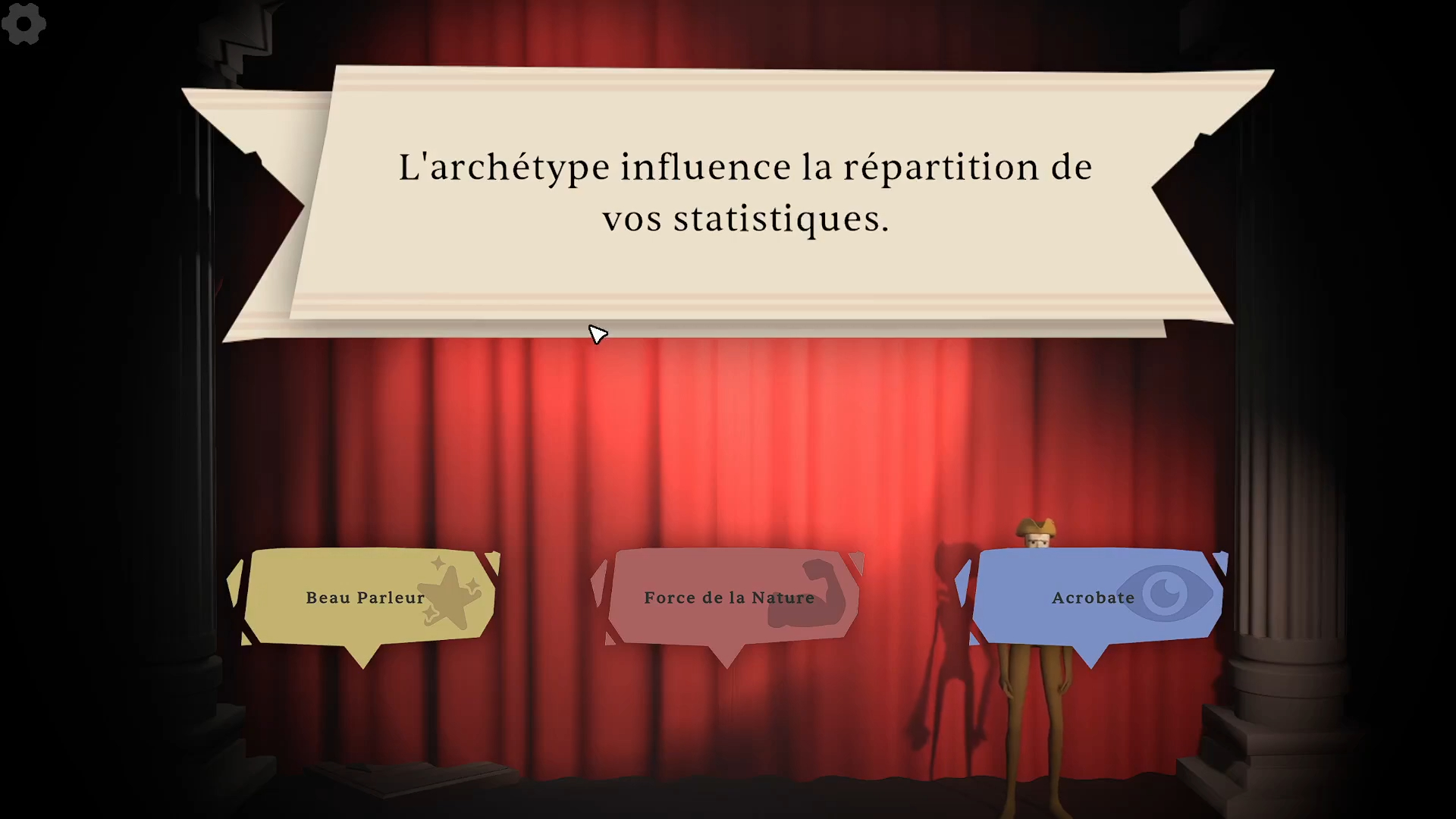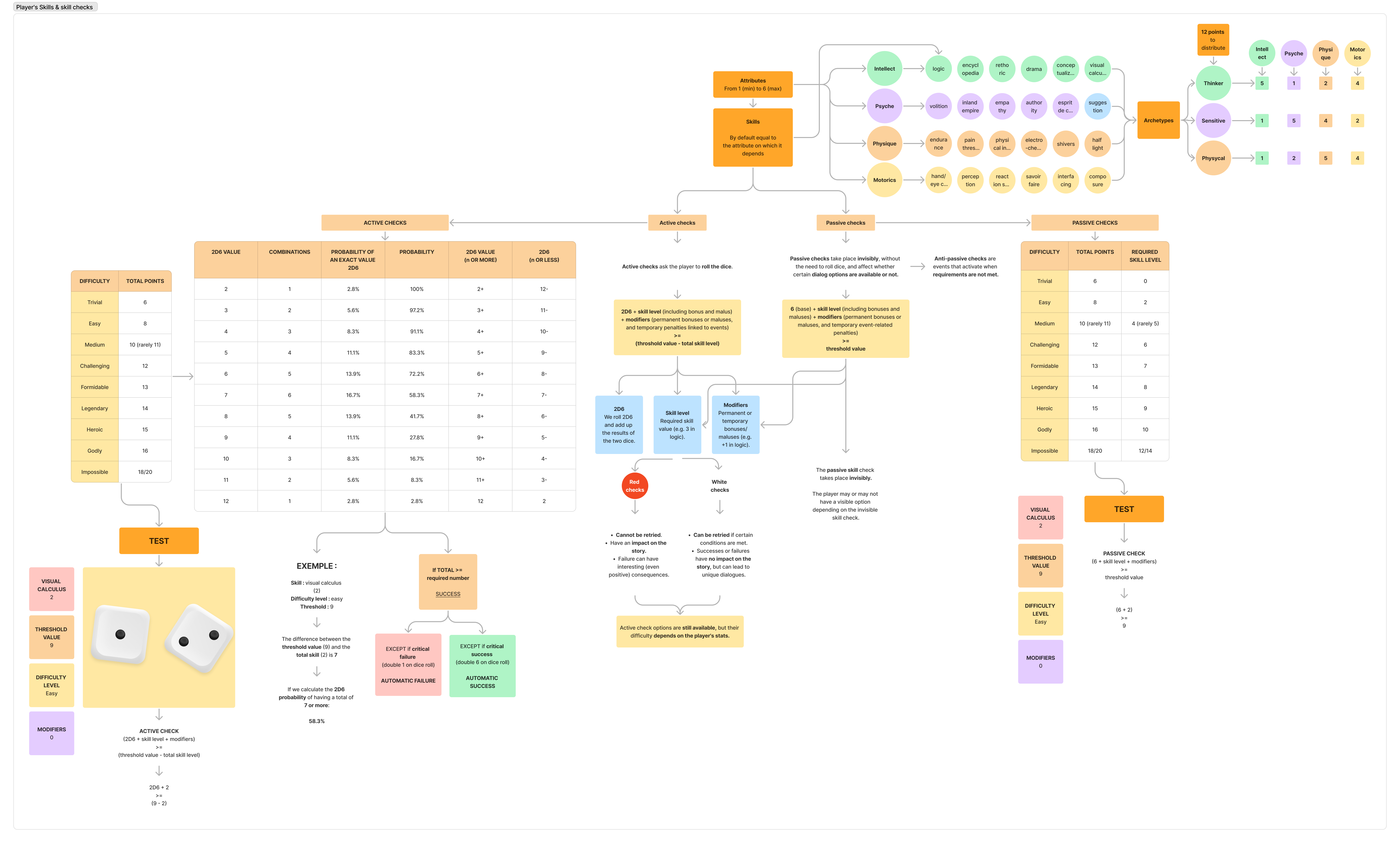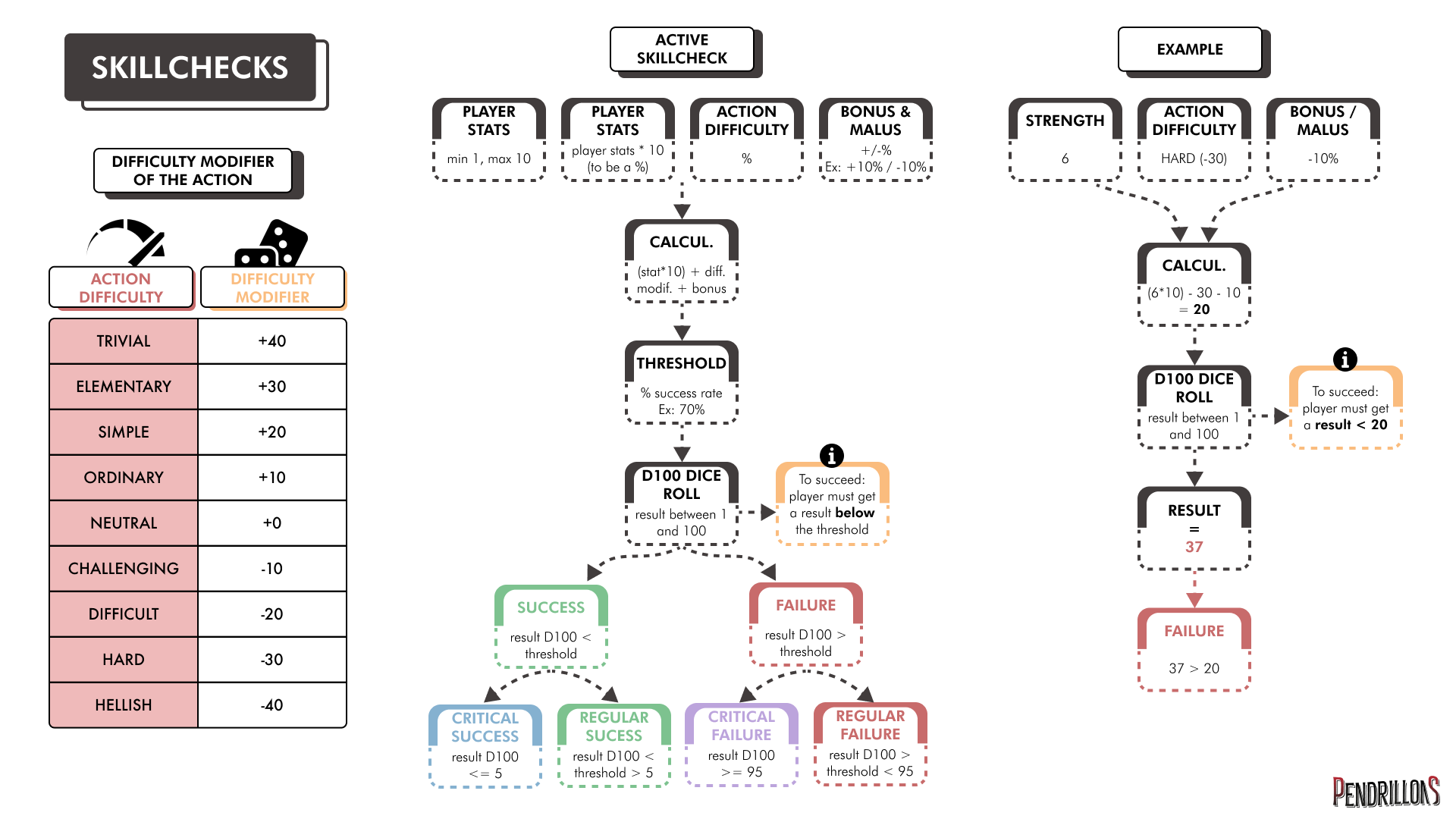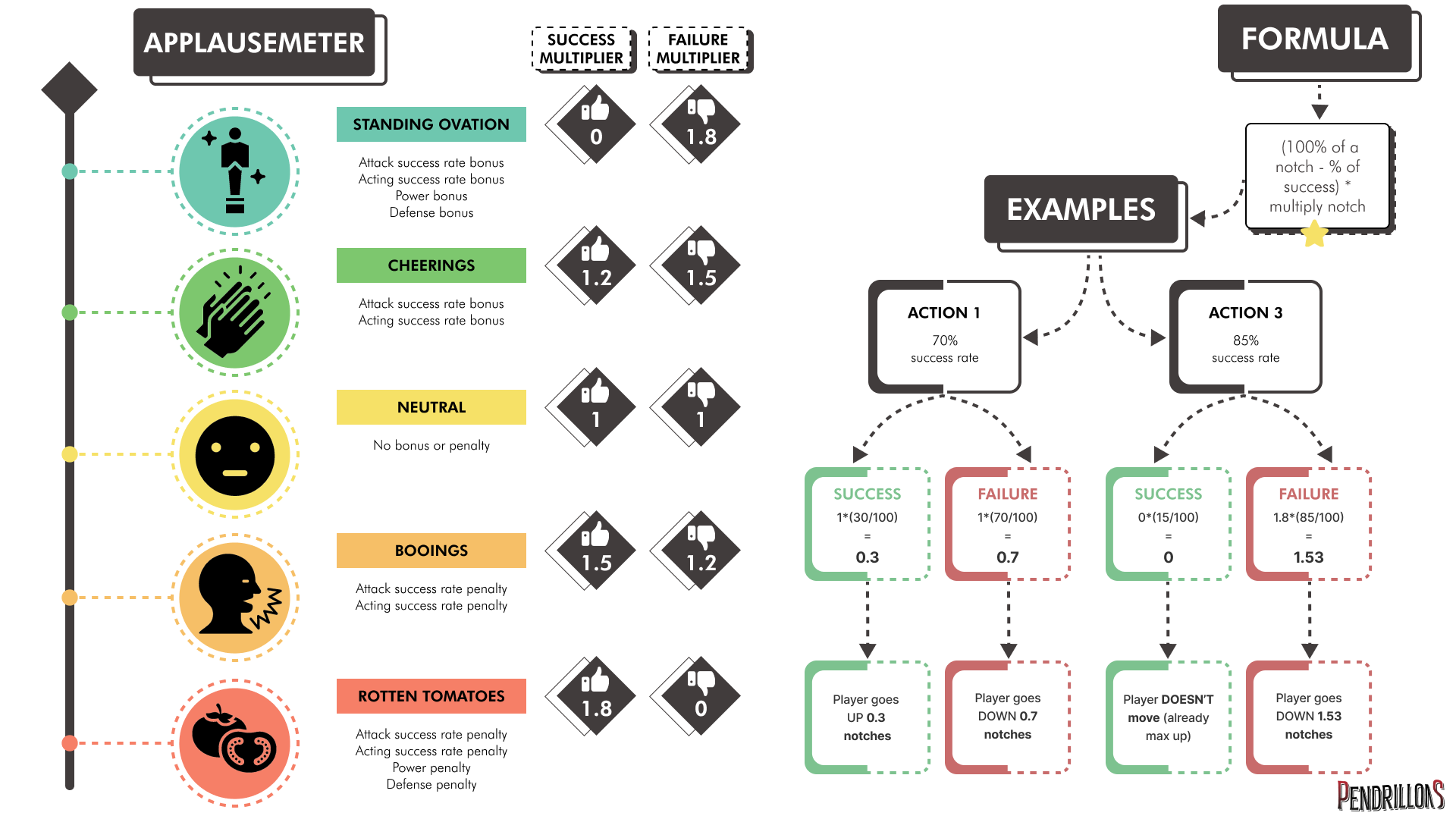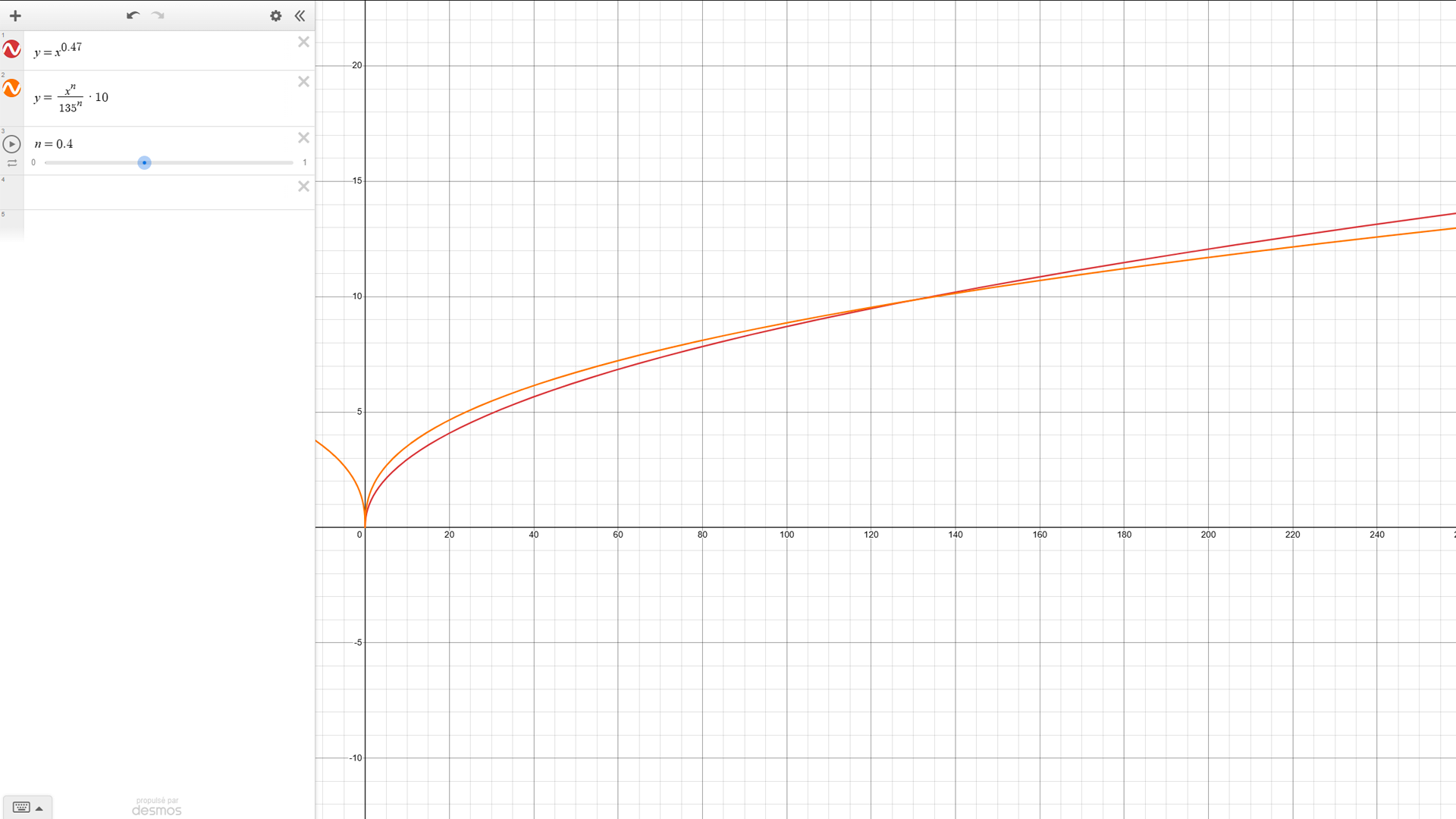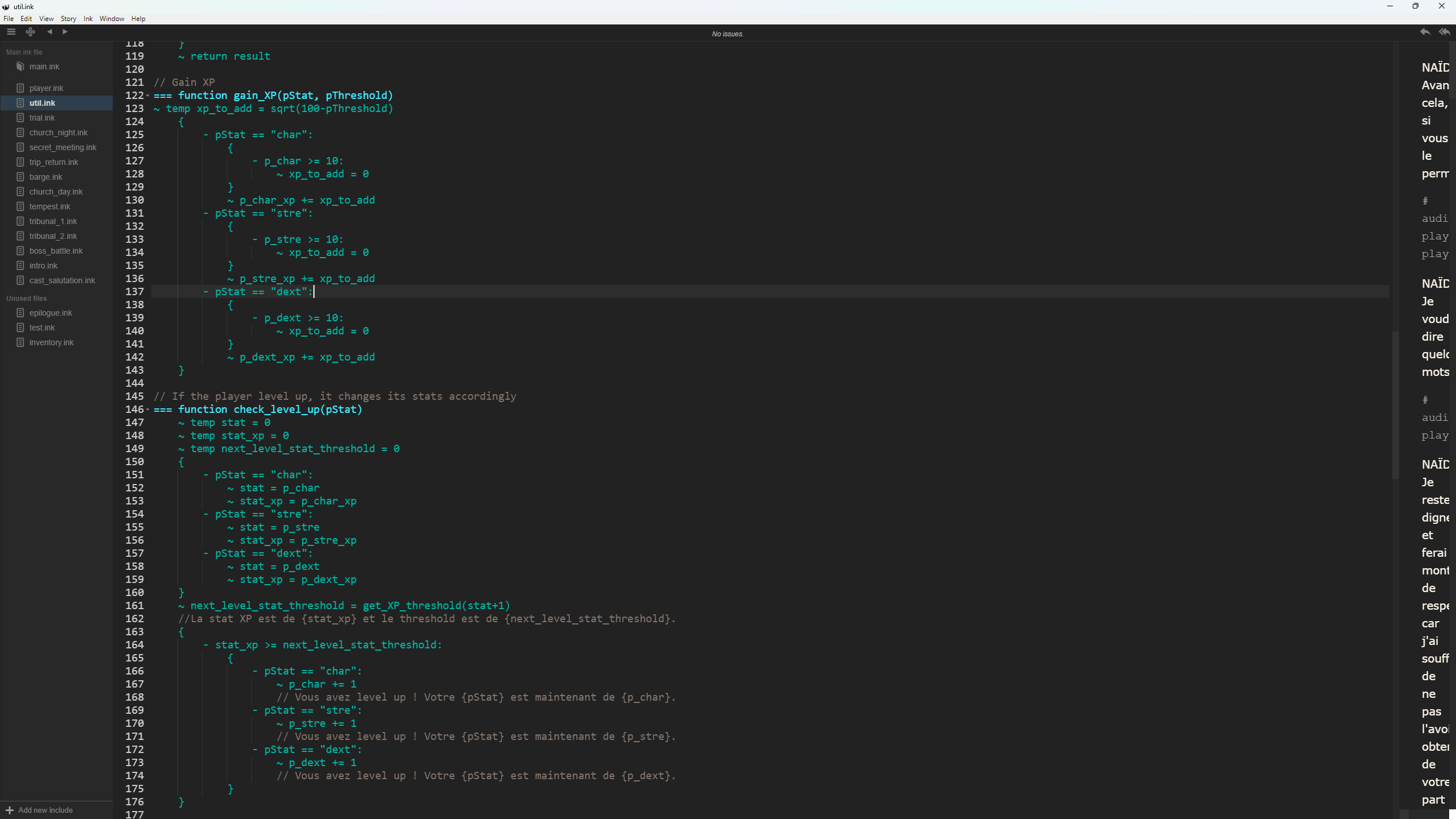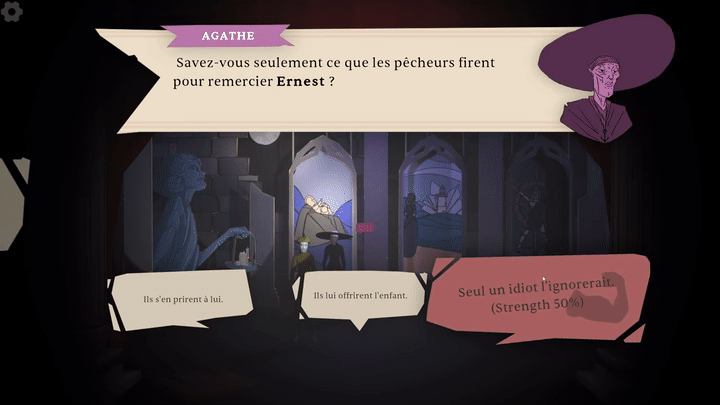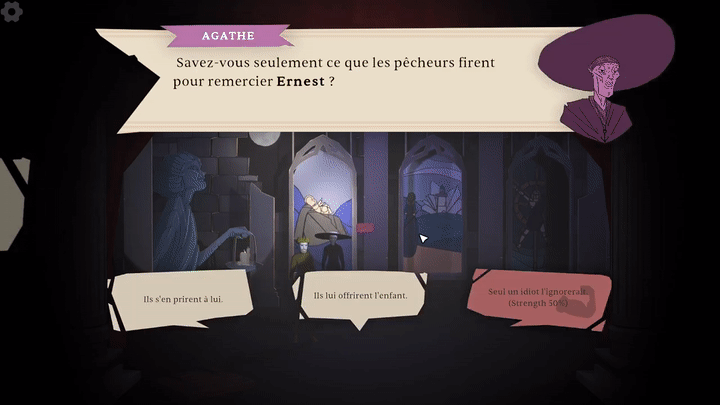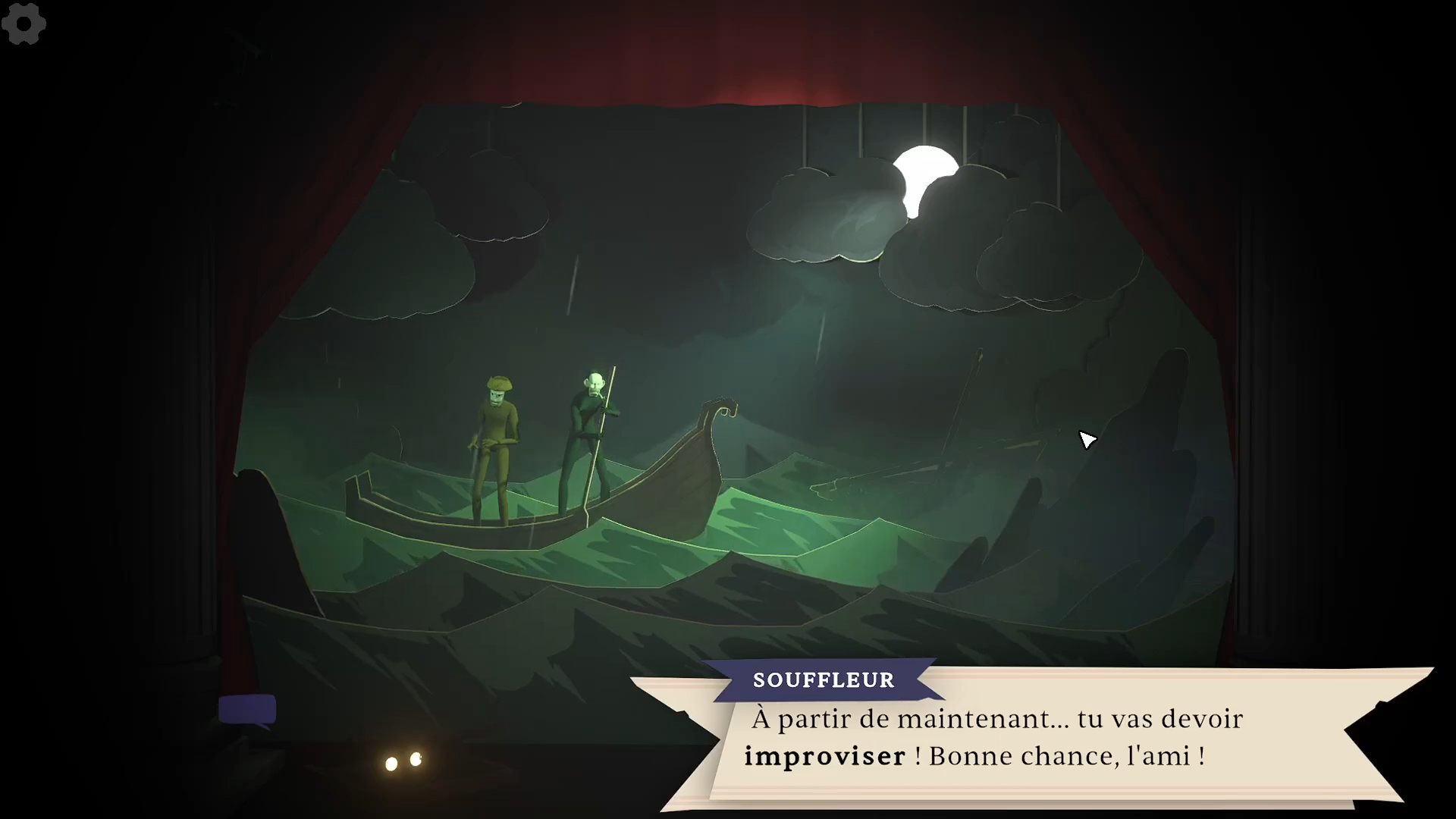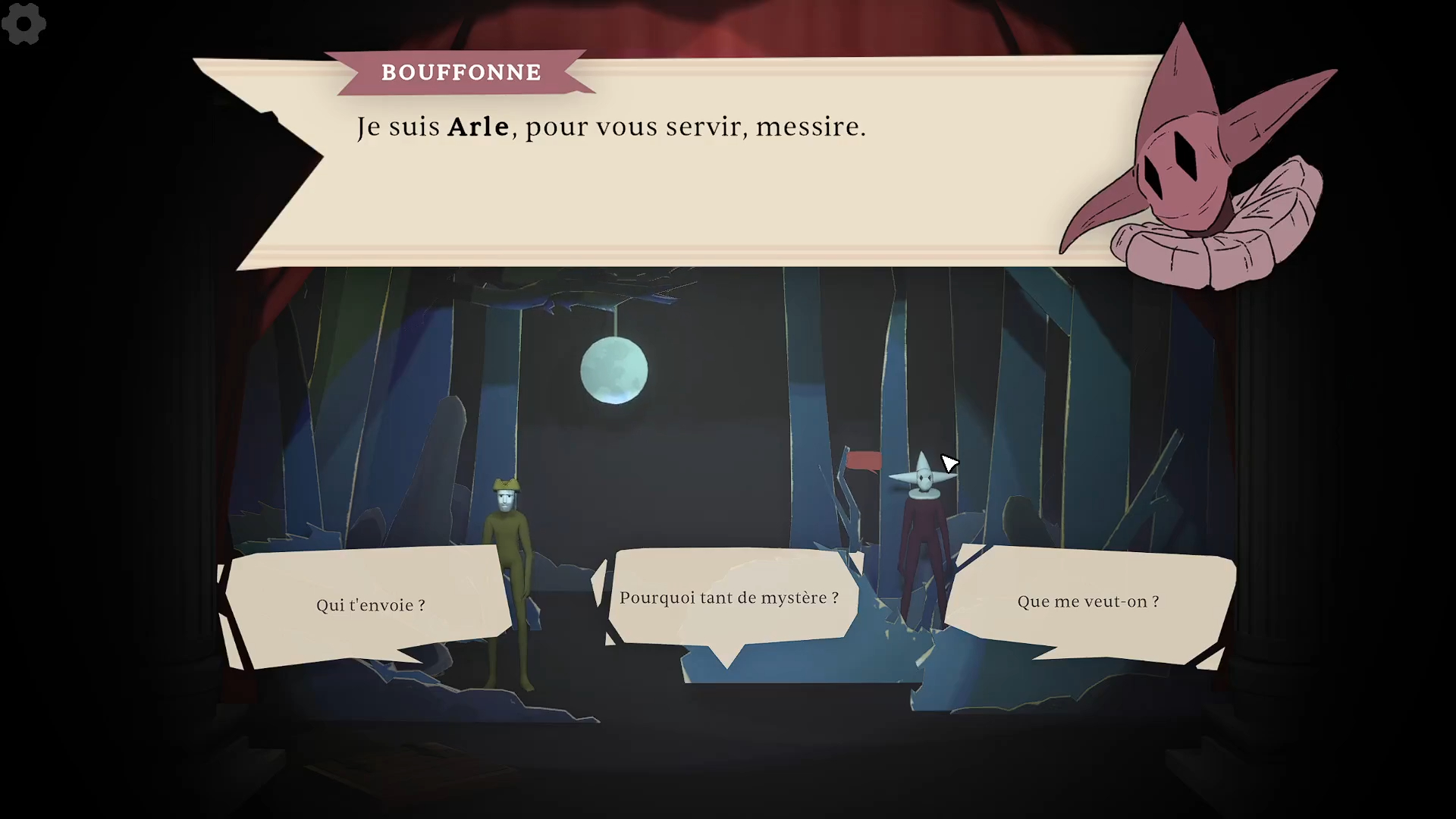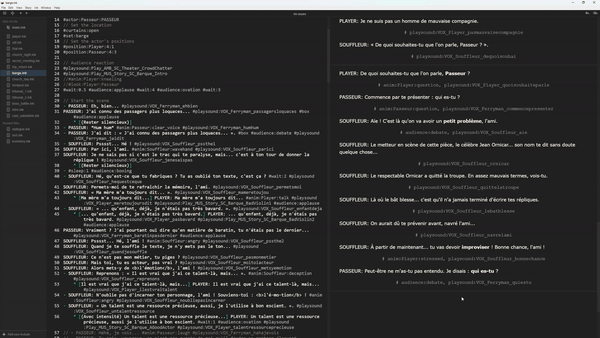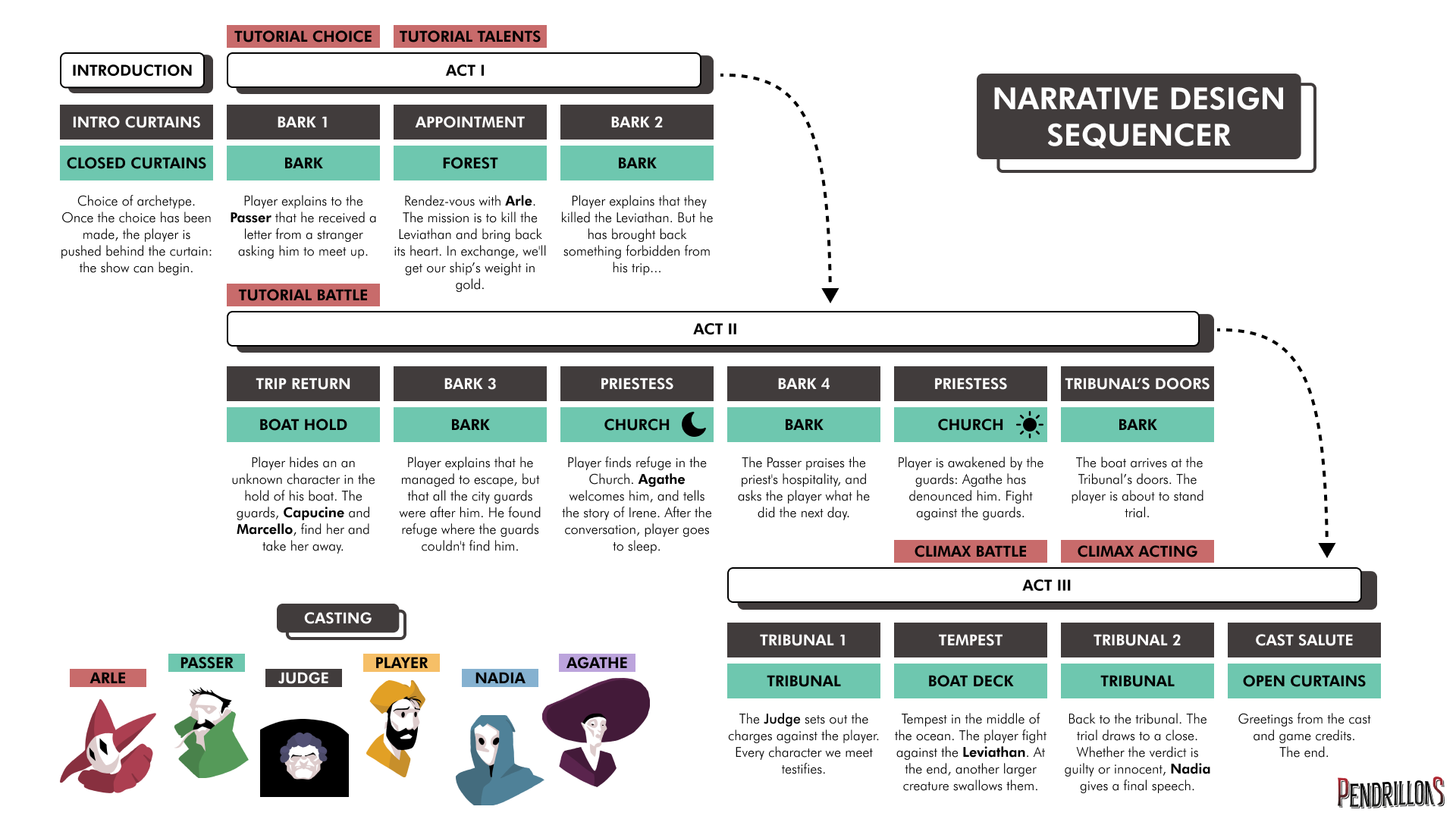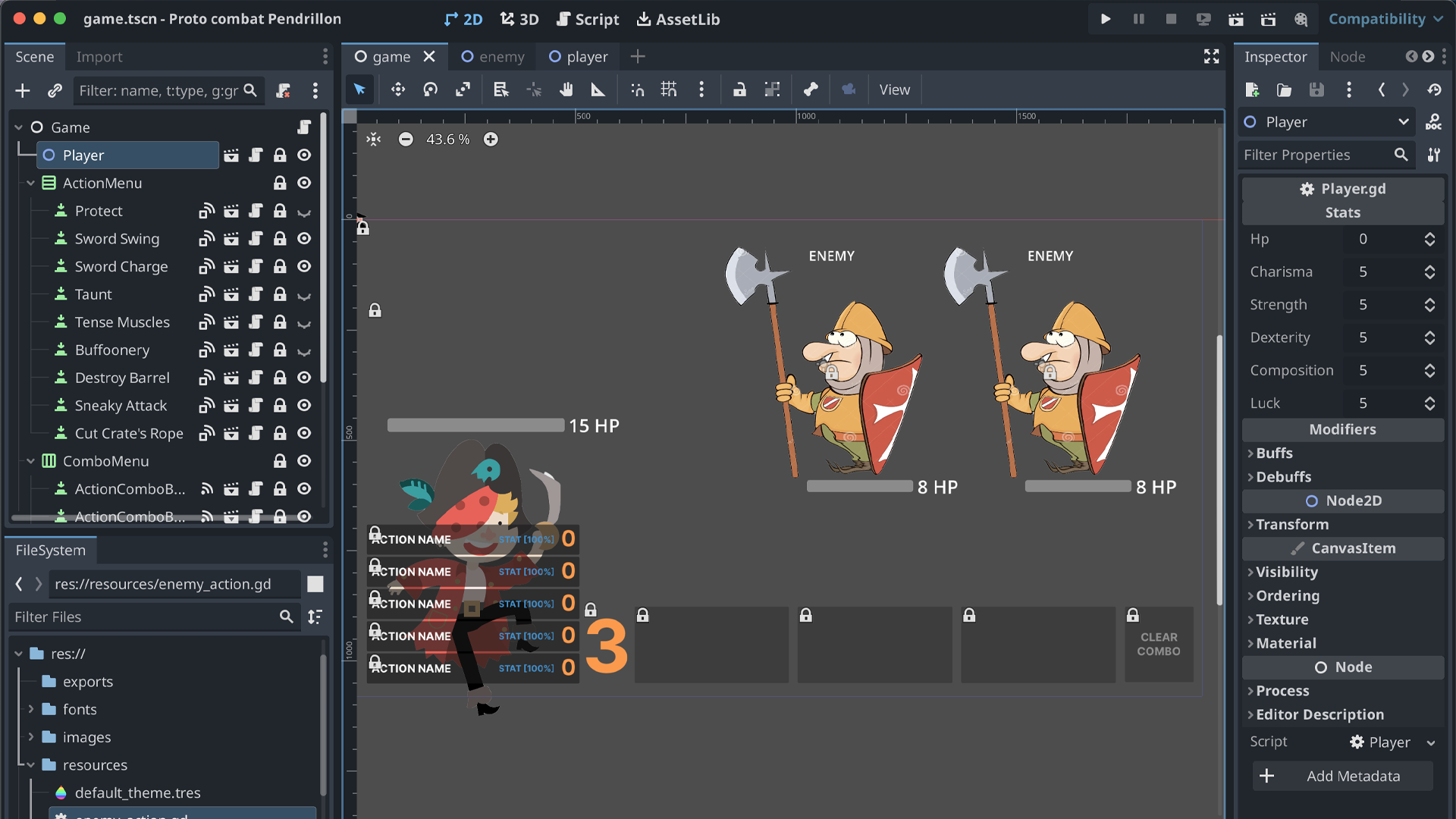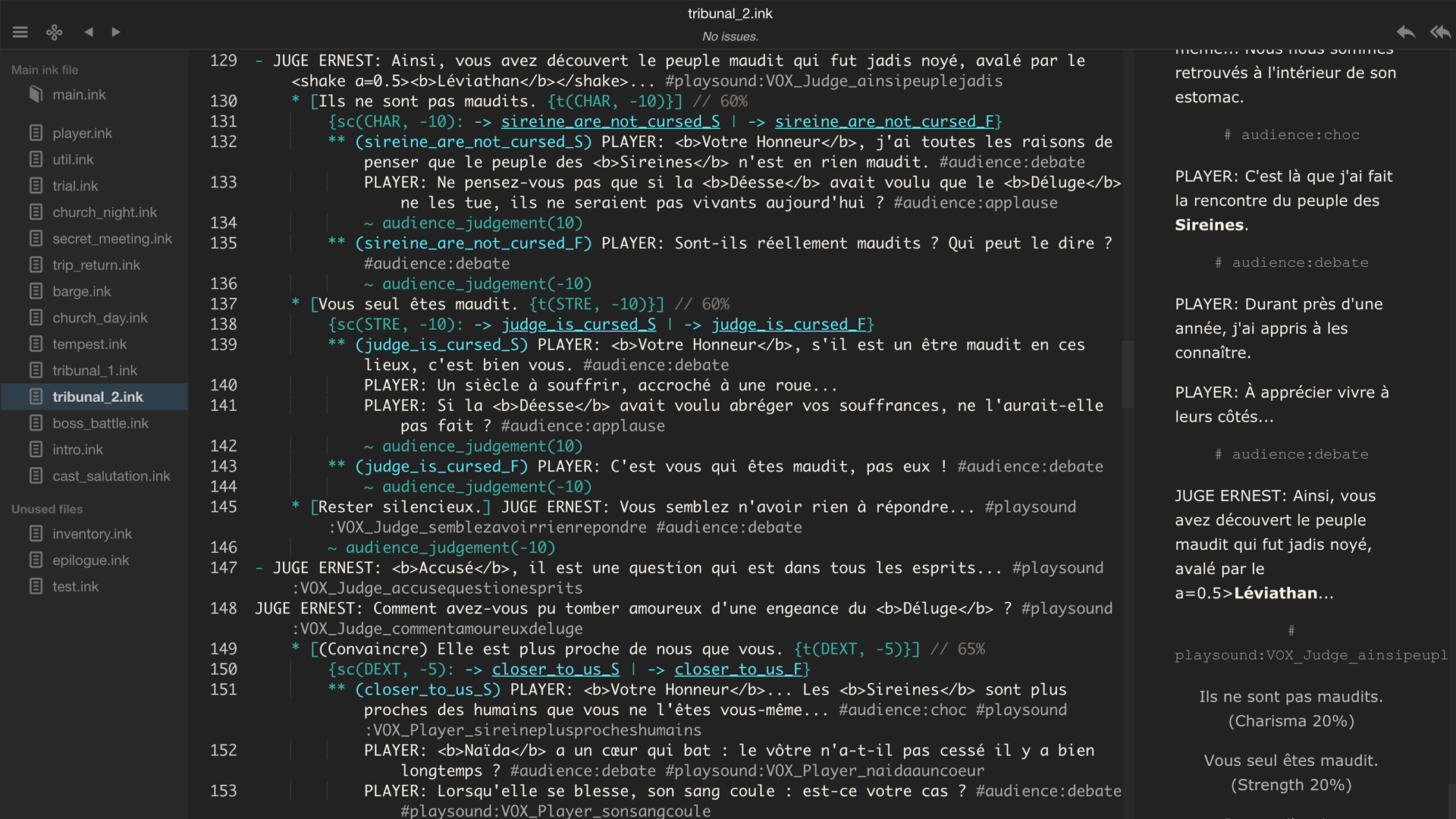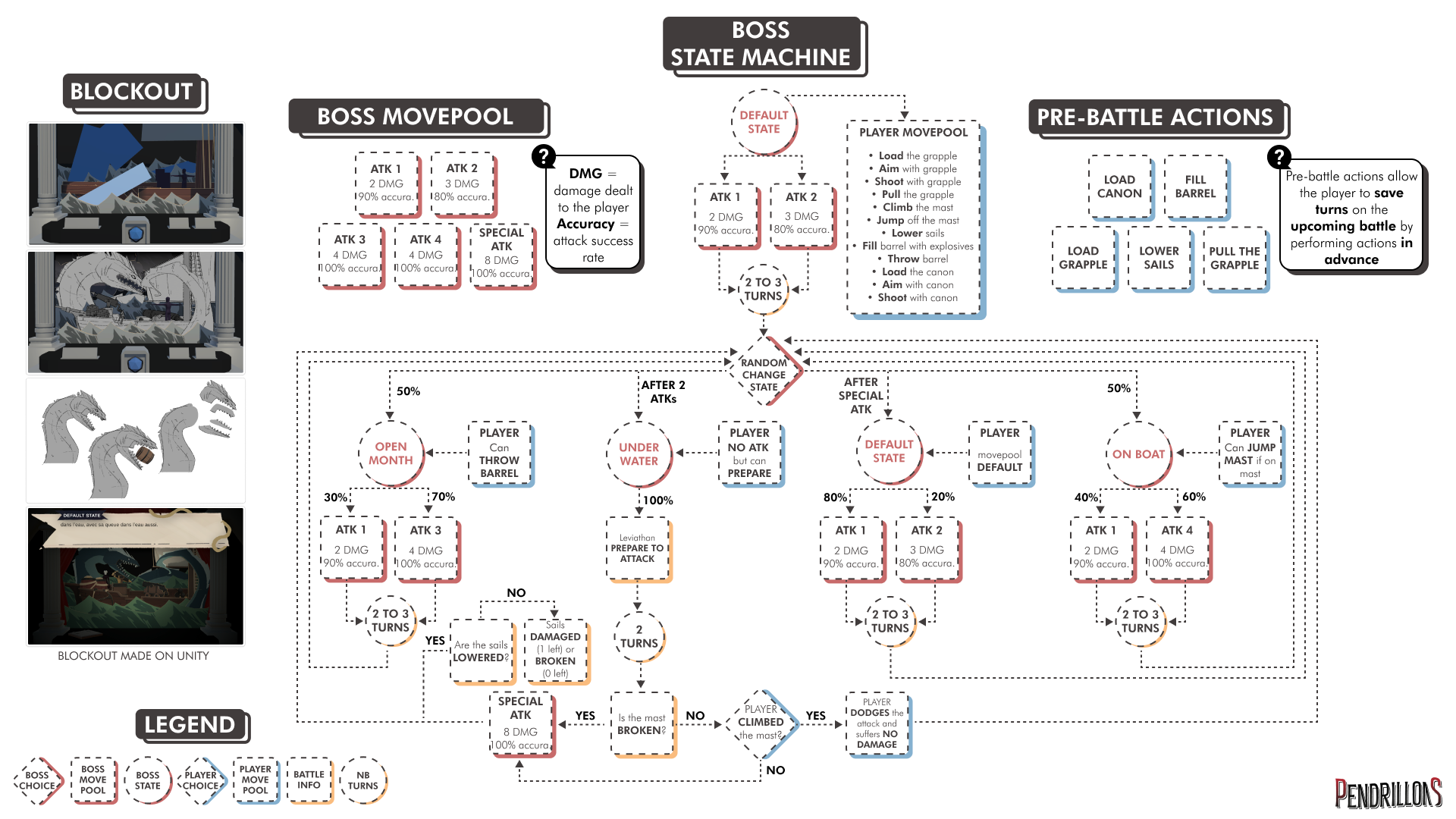PENDRILLONS
OVERVIEW
- RPG
- Theatre Play
- Turn-Based
- Development Time: ≃ 4 Months
- Game Engine: Unity 3D, Ink
- Team Size: 5 Members
Pendrillons is a micro RPG that takes place in a theatre play. Act out your role, choose your lines and actions, and engage in turn-based combat to influence the course of the show.
But beware: an audience is watching the performance, and reacting to your every move!
- Pendrillons has been selected by CNAM-ENJMIN to compete in Pégases 2025.
WHAT DID I WORK ON?
The game features an XP system and a level up system. I also designed the formulas determining the player’s progression.
The game includes a boss fight with a turn-based system, a state machine and interactions with the game scenery.
I wrote all the dialogues and designed all the narrative design for the game, a total of about 22,000 words and several narrative systems.
I worked with dubbing actors and the team’s sound designer to help directing the actors intentions during dubbing sessions, and wrote the dialogues so that they could be interpreted by actors. The game features 75+ min of voices, for a total of 1001 audio files.
I was also the producer and project manager of the game, and made sure we delivered the game on time, with the expected level of quality.
I prototyped several game mechanics in order to assess their suitability for the project.
Using Ink, I managed the scripting of the game, including lots of narrative variations and a boss fight. I also programmed the archetype system, skillcheck system, XP and level-up, stats…
I’ve worked to make the game balanced whatever the playing style. I’ve made sure that all the choices of archetype at the start were viable, and that no matter the skillcheks success rate, a player can still win the game.
I designed the unboarding sequence using the Prompter character to gradually introduce the game mechanics (my favorite feature of the game ❤️).
GAME PILLARS
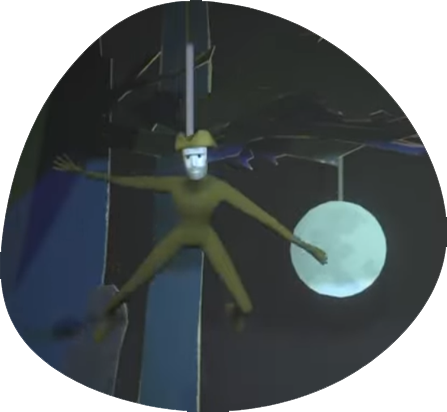
SHOW MUST GO ON
Everything the player does, even their failures, is part of the show.
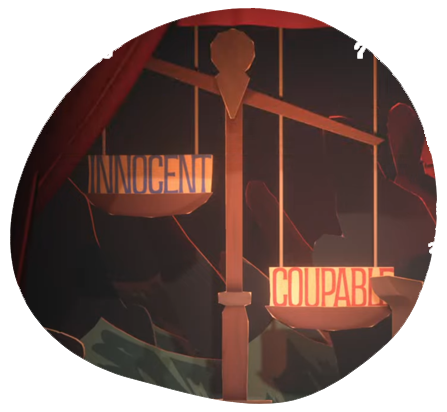
THE AUDIENCE REACTS TO EVERYTHING
The audience reacts to everything the player does.

AT THE CENTER OF A STAGE PLAY
As many elements as possible recall the theme of theater.
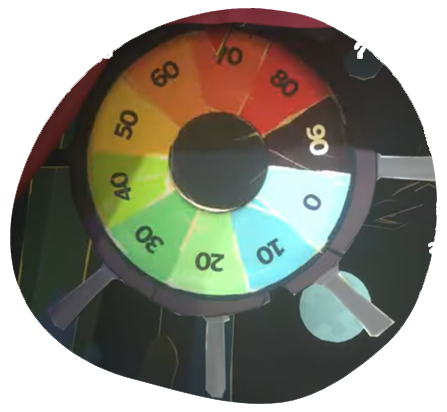
IT'S A TINY RPG
The game is a small RPG: role-playing, classes, stats, skillchecks, level-up, combat...
SYSTEM DESIGN
Pendrillons features several systems, all working in the direction of our game pillars to give the player the feeling of being an actor in a theatre play.
Character stats
The game uses a stats system to calculate players’ successes or failures in skillchecks, as well as the level of difficulty in performing an action.
There are 3 stats in the game: charisma, strength and dexterity.
I designed several progression formulas (experience points, skillchecks…) and used Excel to run tests and tweak the formulas. I programmed macros in VBA to efficiently test different builds and balance the game’s progression. The macros automate calculations such as:
- What is the percentage of success of a skillcheck of difficulty X with a stat of level Y?
- How many experience points the player will earn if the skillcheck is successful.
- How a character’s stats evolve according to the chosen archetype (build).
Archetype system
I designed the game to encourage different styles of play. Some players wanted to break the game and see how far they could go, while others wanted to roleplay and make choices based on the character they played.
I studied the Bartle taxonomy of player types to better understand how different types of players had fun, and created different archetypes that the players can choose from to suit their own style of play.
Skillchecks
Some actions require skillchecks. Their difficulty varies according to the nature of the action and the player’s stats. In Pendrillons, even failure moves the story forward, and sometimes missing a skillcheck is even more fun!
I benchmarked different RPGs to analyze how their skillcheck system worked. In particular, I took inspiration from Disco Elysium’s system, but simplified it to suit the experience we’d decided to create.
Applausemeter & audience reaction
To give the player the impression of being at the heart of a play, and to ensure that their decisions have immediate consequences, the audience reacts to the player’s actions and lines of dialogue. It’s also a great way to trigger immediate feedback. The choices they make during the play, and their success or failure at skillchecks, influence the course of the show.
PROGRESSION DESIGN
The player can gain experience by successfully completing skillchecks, and level up as the adventure progresses. The higher their stats rise, the more difficult actions can be performed.
XP and level up system
I’ve designed an XP gain and level-up system. I created two mathematical formulas:
- XP gain formula = √(100 – success rate)
- Level up formula = ((XP^n)/(XPMAX^n))*10
Game balancing
I first focused on balancing the skillchecks as the game progressed, making sure that the player didn’t end up in a negative loop by missing several skillchecks in a row.
I balanced the boss fight, which had to be challenging yet winnable even if the player arrived with a low level.
Finally, I’ve balanced the trial sequence, so that it’s neither too easy to win or lose the trial, and players have a chance whatever their archetype or playing style.
The boss fight is designed so that actions cost points in order to allow all archetypes to be useful depending on the strategy.
The trial sequence is the climax of the game, as the audience can condemn or acquit the player, depending on their defense.
NARRATIVE DESIGN
Pendrillons is a narrative experience that presented many challenges in terms of narrative design. Our main objective was to make the player experience the fantasy of being an actor in a play, while allowing them to have an influence on the play’s story.
The player is an actor improvising their lines
So that the player could make their own choices of actions and lines, I decided that the director of the play had left the company, and that the player’s role had never been written down: he’ll have to improvise!
The audience and the actors react to the player's choices
By choosing their actions and lines, the player can surprise the audience, get a standing ovation, provoke hilarity or even be booed… The other actors also react to their choices and adapt to their improvisations: show must go on!
Putting the player on trial: all your actions have consequences..!
The central idea to make sure that the player’s choices have an impact on the game without multiplying the branches was to end the game with a trial sequence: all the characters encountered will testify to the player’s actions, and the player will have to defend themselves to win the trial, whose judge is the public.
Managing narrative variations, branching and scripting with Ink
The game features hundreds of content variations (sometimes not exactly branching), custom variables and unique situations, the outcome of which leads to changes in the story. To manage the narrative design and scripting, I chose to use Ink as a middleware.
Voice actors supervision
All the characters in the game are dubbed by actors and actresses, whom we brought into the studio to record the voices.
I wrote all the dialogues for the game, taking into account the fact that they would be performed by actors.
ONBOARDING
Pendrillons is a narrative experience that presented many challenges in terms of narrative design. Our main objective was to make the player experience the fantasy of being an actor in a play, while allowing them to have an influence on the play’s story.
The prompter is here to help the player
One of the most fun things to design was the unboarding sequence. I decided to use the Prompter character to convey essential information to the player about how to play diegetically, while simultaneously breaking the fourth wall.
The Prompter is the only character who speaks to the player, not to the character they are playing. He quickly became one of the team’s favorite characters, as well as the players!
PROTOTYPING
I created various prototypes to test the possibilities offered by the systems and measure the viability of certain game mechanics.
The combat system prototype
To ensure that the combat system conceived for the game was functional while allowing our programmer to work on other things, I programmed a prototype of the system very quickly.
PROGRAMMING & SCRIPTING
My programming skills were very useful throughout the project. It allowed us to:
- Remove a workload from our programmer.
- Prototype systems independently.
- Script a part of the game’s logic directly in Ink.
- And, more importantly, to work in an efficient way with our programmer.
What I programmed
I programed every script and game logic that is handled in Ink: the archetype system, skillcheck system, XP and level-up, stats system, the applausemeter and the combat system.
Programming the boss fight state machine
The boss fight was programmed entirely in Ink. I designed then coded a state machine in order to manage the different states of the boss, but also the possibilities of interactions with the scenery: reload your harpoon, aim, shoot, fill the barrels with explosive powder, climb the mast, lower the sails…
TEAM CREDITS
Development Team
Maxence Martiniani: Game Designer & Narrative Designer
Victorien Prevot: Game Artist
Théo(phile) Carrasco: Programmer
Romain Belet: Sound Designer
Lud.e Chatin: UX/UI Designer
Voice Actors
Antonin Leuret: Player
Cyrille Divry: Judge Ernest
Gweltaz Lavanan: Prompter
Marie Noelle Terracol: Priestess Agathe
Betty Desmier: Arle
Mélanie Tomorrow: Capucine
Nathaël Berthier: Passer
Bastien Belvaux: Marcello
Leïla Larrodé: Naïda
